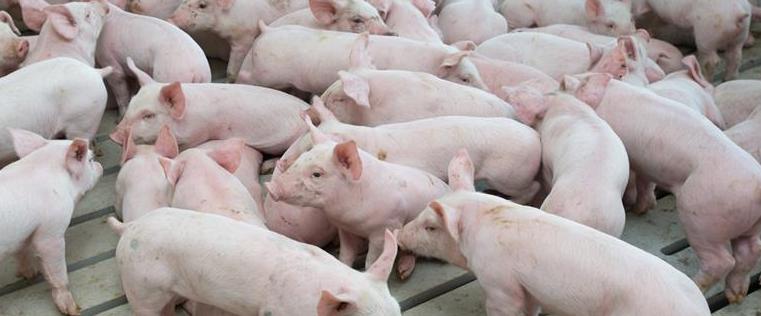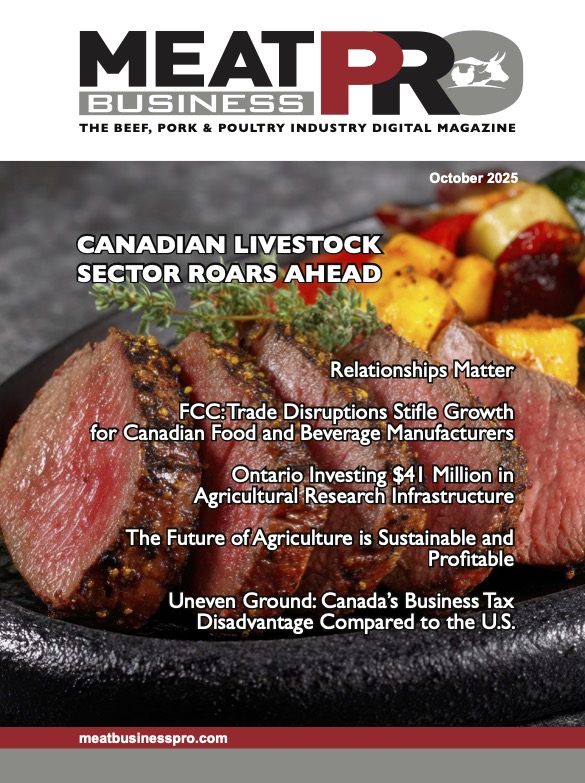The Manitoba PEDv Outbreak: Was Bio-Security Really Working

With forty-one barns infected with PEDv in Southern Manitoba, mine was not the first call Andrew Dickson had taken the morning I called the Manitoba Pork Council office
by Cam Patterson
CBC was also wanting an interview with the general manager. Forty-one barns infected with PEDv in Southern Manitoba hit the news and the response from media came quick. What was more profound was the Ag and Pork journals, blogs, and online forums across Canada and deep into the American Pork belt that we’re also reporting on the outbreak, and keeping a close eye.
Even Minnesota Pork Producer President, Jay Moore, went on the record to say that they were watching the PEDv situation in Canada closely. But he added Canadian officials were handling it properly.
“People ask if it is calamitous to the industry in terms of the numbers of animals taken out of the system?” Dickson said. “Well, at this point and time 80% of the herd is doing just fine. I mean it’s 63,000 sows out of 340,000 in the province. Even in the outbreak region only half the barns are infected.”
According to the Porcine Epidemic Diarrhea Virus ( PEDv ) On-Farm Cases report, updated as recently as July 7, 2017, there were four cases reported in 2014 in Manitoba, and of those they were Sow and Finisher barns. In 2015, there was one case in a Finisher barn. For 2016, five cases in Sow and Finishers. But this year reported cases spiked to 51 between May to July. On paper that is a staggering defeat in the war against PEDv, and one could surmise that the bio-security that saved the Manitoba industry a few years ago had failed.
“When it comes to bio-security the pork industry is always and diligently focused on continued improvement”
“We’re not sitting around on this,” Dickson states. “We are being very proactive. We have a disease management group in place. The Vet group is meeting on a regular basis, and vets are testing barns daily. We’re warning farms in the area that are not infected to keep their bio-security high. For those in the infected southeastern quadrant we’re setting up an information sharing database so farmers can see if their neighbors are tested positive while transporters are setting aside trailers that only deal with PEDv. And it’s working because we haven’t had any new cases reported in over two weeks, so that’s encouraging.”
So, how did it happen? Why the spike?
Let’s take a look back for a moment.
The pork industry was crippled when the first of the 2014 PEDv pandemic – yes, let’s call it that – spread from a barn in Ontario like wild fire across a hot prairie, wiping out piglets into a full blown North American crisis. Millions of dollars later, bio-security practices were finally showing signs of abating the outbreak – and Manitoba was one of the first to set the template.
Funding programs kicked in to help farmers grappling with the disease, including the high traffic sites like abattoirs, livestock assembly yards, and livestock transportation companies. All in all it was a marvel of synergy across an entire industry, and then the disease seemed to fade from daily headlines, the crisis under control. Many barns that were high risk in Ontario, Quebec, across the prairies and into the west, were testing negative.
Since 2015 the bio-security system in Canada was doing what it was supposed to but then in 2016, the CPC and all the provincial pork councils found themselves rallying CFIA to cease a mandate to revise the regulation that would effectively cut funding for the provincial truck wash stations – the very core of the bio-security program. The regulation stipulated all trucks delivering livestock to the U.S. for Canadian producers must wash at an American facility before re-entering Canada. If the U.S. Bio-security bar was as high as Canada’s that would be no problem, but it wasn’t then and still is not now. So the concern was valid. During a Q&A interview with Canadian Meat Business last year, CPC Chairman Rick Bergmann even stated it would be a travesty if the regulation would pass and the proverbial door opened to all that kind of trouble.
Nonetheless the regulation passed and onus fell on Canadian producers and processors and transports to bear the cost if they wanted to do the extra washing once back across the border.
Is there a direct correlation to this years spike?
“Livestock trailers were definitely looked at as one of the vectors of the problem,” said Gary Stordy, Canadian Pork Council’s Manager of Public Relations. “But it’s difficult to pinpoint the outbreak this year in Southern Manitoba to one specific smoking gun per se.”
“Trailers coming back from the US that are potentially infected is not helpful, but is one potential cause out of many,” Dickson said. “For example, the assembly yards have always been looked at as infected sites because there isn’t much the owners can do. I mean they can try to limit the amount of disease but they can’t eliminate it.”
“We’re also establishing a Trusted Trucker Program,” Stordy said. “It’s kind of like the Nexus program for airline travel. Essentially if you’re hauling live pigs into the US for a Canadian producer then you have to go through a registration program so we know that those trailers are going through a recognized truck wash facility – and what I mean by recognized is a Canadian facility that has our bio-security protocols in place.”
The investigation into the outbreak is still ongoing. And as a result of the cases in Manitoba, bio-security is on high alert.
“Essentially we’re looking for a return to the emergency bio-security plan that was setup two years ago,” Stordy added. “But you have to understand that even though the trusted true comment that bio-security first line of defense is at the farm level, the real truth is bio-security is intended to limit the spread of PEDv. It’s never 100% fool proof.”
The On-Farm Cases report also claimed that nine of the 61 premises previously confirmed in Manitoba for PEDv were flagged to be PED Presumptive Negative; as determined by the Chief Veterinary Office (CVO) and the Manitoba Swine veterinarian’s negative status protocol. While on the processing side, 20 federal and provincial abattoirs, truck-wash stations and livestock trailers were tested, and nine of those were positive.
What does Presumptive Negative mean? Basically farms that adhered to strict bio-security practices and confirmed virus elimination with concurrent testing still showed potential PED threat in their manure storage systems.
“We’re going to have a manure management crew sort out all the problems in these barns right through to the fall,” Dickson stated.So the simple truth is, no matter how stringent and enforced counter measures are, outbreaks will happen – viruses are like that – and what this may actually show is Manitoba’s readiness to deal with epidemic threats quickly, with heightened security measures, can quickly contain the spread.
“It’s always difficult to catch it (PEDv) early in a barn,” Dickson said. So you have to be alert and diligent. So we’re asking producers to slow up, get that second text before you move animals in. It’s only a $20 added step compared to the probability of an $80,000 clean up bill.”
Stordy is confident bio-security in the Canadian pork industry is continually setting the bar.
“You have take into account that, even with what is going on now, there are new discoveries on how this virus (PEDv) is spreading that helps us tighten our bio-security going forward. Because, when it comes to bio-security, we are always and diligently focused on continued improvement.”












